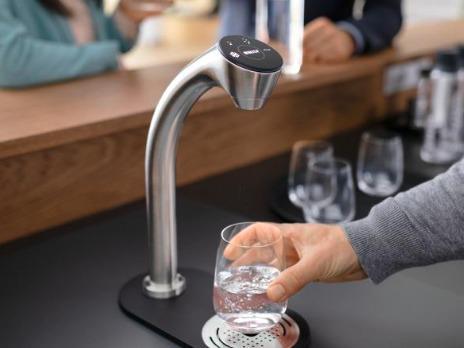

Are gyms sustainable?
When it comes to environmental impact, gyms and fitness centres are never usually part of the conversation. Most blame and attention, and appropriately so due to their proportional share of pollutants, is driven towards petrochemical firms.
However, the truth is that every individual, business and organisation can take steps to reduce their environmental footprint. When these small steps are aggregated across industries, including gyms and fitness centres, a big difference can occur.

Energy use
Gyms are significant consumers of energy. Energy is required for everything from keeping the lights turned on, the gym temperature cold, the swimming pool warm and the treadmills running. Moreover, the rise of the 24-hour gym, to fit in with our busy lives, means this consumption doesn't stop. Ultimately this means that gyms are highly energy-intensive which can result in gyms having a high carbon footprint. However, this high concentration means that it is an easy area to target when looking to reduce this impact.

Water consumption
Gyms also use up much freshwater not only through drinking but also through showers, toilettes and cleaning. Consuming water has an impact on energy consumption as the more water you use, the more energy is required to extract, sanitise and transport it to your gym. Broader concern with water consumption is directed at Earth's limited supply of fresh water, as only 2.5% of Earth's water is fresh, with WWF identifying water scarcity as one of Earth's key threats.

Plastic Use
Plastic, and more crucially, single-use plastic is ubiquitous throughout gyms. Single-use plastic water bottles are used endemically, not just in gyms, and lead to a huge waste of polyethylene terephthalate (PET), a petrochemical. In the UK, we use 38.5 million plastic bottles every day, of which 15 million are not recycled. Beyond plastic water bottles, gym equipment is often created using plastic such as yoga mats and weights.

The business case for green gyms
The simple answer to why gyms should go green is simply because gym-goers are increasingly demanding it. Here are some key stats to back it up:
64% of consumers would be more likely to return to an establishment for future purchases if they could refill their water bottle.
73% would view a business more favourably if it gave free tap or filtered water on request.
66% of people would choose a business that offered free water refills over a competitor.

Sustainable focus areas for your gym
Responsible waste disposal: Consider whether everything is being done to reduce, reuse and recycle in your gym. Reducing what we consume is always the best strategy as this prevents excess energy consumption, however, if this is not possible, reusing and recycling are far more sustainable than virgin consumption. For example, whilst not using plastic in the first instance is ideal, if we do use plastic then reusing it multiple times e.g. reusable water bottles or recycling it e.g. turning old plastic bottles into yoga mats are positive alternatives.

Clean energy
Knowing where your energy originates from is the first step to being able to offset any emissions created. For example, by focusing on renewable sources such as wind, solar and hydroelectric, greenhouse gas emissions are significantly reduced. Moreover, subtle changes through efficient energy management such as introducing motion-sensor lights or temperature control guidelines can also significantly decrease energy consumption through gyms and fitness centres.

Think of the oceans
Focus on how you can significantly reduce single-plastic use. Single-use surrounds gyms and fitness centres from single-use plastic bottles to poolside shoe covers. Undertake a single-use plastic audit and highlight areas of high single-use plastic consumption. You can then investigate ways of preventing this build-up or find ways to encourage recycling.
Gym sustainability top tip: Take action today by creating a list of three quick sustainability wins you can easily achieve in the short-term for your gym.

Reduce your carbon footprint
BRITA water dispensers produce 86% less CO2 than bottled water. In just one year, this is the equivalent of saving your gym the emissions of charging your smartphone 137,000 times. Our dispensers are also in-built with natural refrigerants which make redundant the need for power-hungry refrigerators to achieve the same chilled temperature. Focus on how you can significantly reduce single-plastic use. The natural refrigerants have a minimal environmental impact, including zero fluorocarbons typically associated with refrigerants that damage the ozone layer.

Diminish plastic waste
BRITA water dispensers can significantly reduce the quantity of plastic waste. By offering mains-fed water dispensers it eradicates the need for new plastic bottles along with the energy required to produce and transport pre-packed water. Every year, drinking BRITA filtered water, saves 4 billion plastic bottles from production – enough to encircle the earth 35 times.



